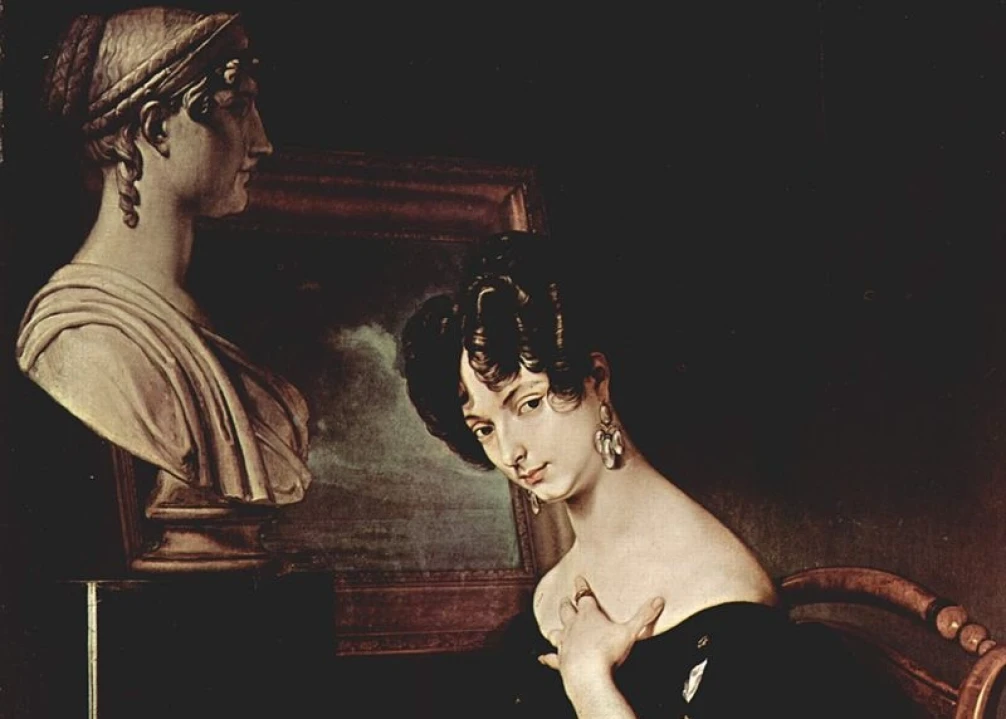The ruined Princess. Cristina Trivulzio di Belgiojoso used this pseudonym to write her articles about the Italian revolution revolts in a modest attic in Paris, where she lived as a fugitive. She had a great passion for freedom and revolution. This same passion scarred the entire life of the noblewoman making her to abandon her comfort - without regrets – and to live as an exile by following her iron revolutionary spirit and facing risks, financial difficulties and malicious hearsays.
She was a key figure of the Italian Revolution but she has been often ignored by history books. Cristina was born in Milan on June 28, 1808. Her father was the heir of one of the most important families of the Milan nobility. Even her mother, Vittoria dei Marchesi Gherardini, came from a noble family. Her father died early leaving Cristina as sole heir; her mother remarried to Alessandro Visconti d'Aragona, who introduced her to the revolutionary passions: in 1821 he was arrested from Austrians – then dominators of the Lombardy region – with the charge of participation to the revolutionary revolts.
During her childhood, she met Ernesta Bisi, her teacher of drawing and committed patriot. From then on they will always share a honest friendship and revolutionary ideals: Ernesta will be the one who will, introduce Cristina to the clubs of revolutionary conspiracies.
On September 24, 1824, just 16 years old, she married Emilio Barbian Belgiojoso, man of a very libertine life. It was in the marital relationship that the rebellious spirit of Cristina began to grow: stove of the betrayal of her husband, she left and started pointing her life to political engagement. A brave and unusual behavior for a noblewoman of the XIX century, that cost her the contempt and slander of the Milan bourgeoisie.
During this period, the strength and determination of Cristina became a source of concern for Austrians: the princess decided to leave Milan and, after the difficulties encountered to get a passport, she went to Genoa and then Rome, Naples and Florence. In these cities she attended the more intellectual salons and met with the great personalities of the era. In particular, in Rome she knew Hortense de Beauharnais, the mother of Napoleon III: Cristina, who had a particular admiration for Hortense’s son, confessed her in one of her letters to put great hopes in him for the future of Italy.
Because of relations with the Carbonari (the revolutionary army), the persecution of the Austrian authorities intensified : the only way to maintain her freedom and her political commitment was to escape. Hunted by police, Cristina managed with the help of some friends to escape and to reach Nice and then Paris.
In Paris, the life of the rebel princess dramatically changed: to force her to return to Lombardy, the Austrian government expropriated her property and assets. Cristina continued to choose freedom over domination and uprising over subordination, although this meant a life of difficulties hard to cope with: in her own words "Rich heir, grew up in the customs of the Milanese aristocracy, I did not know anything about the necessities of life [...] I was able to paint, sing, play the piano, but I could not hem a handkerchief, cook a boiled egg or order a meal". But her unwavering determination brought her to try various jobs: Cristina started to write articles, sew rosettes, teach drawing, regardless of the social norms that considered unseemly that a woman of her origins even worked.
The Parisian years were marked by important friendships, such as with General La Fayette and Vicomte de Chateaubriand, that helped her get financially back on track and regain possession of her property. She also got to know numerous artists such as Honoré de Balzac and Alfred de Musset; and she never stopped her financial contribution to patriotic uprisings.
In 1838 she gave birth to her first and only daughter , Maria, probably from the union with the historian François Mignet, with whom Cristina lived an intense love story, the only one of her years in Paris, and probably of her entire life. The birth of her daughter encouraged her to return to Lombardy: in 1840 she settled in the country of Locate, where she saw the desperate conditions of the farmers and their children: soon she was able to create a kindergarten and a number of schools, to offer meals and low-cost medicines and to fund, in clear advance on time with the rest of the world, a workers' associations.
The political commitment does not abandon the life of Cristina during the Five Days of Milan: she was in Naples, and organized an expedition to join the fighting. In 1849 she took part in the defense of the Roman Republic. To save her life she was again forced into exile, and she decided to go to Malta. After wandering in Greece and Asia, she settled in a valley near Ankara, Turkey, where she ran a farm until 1855, when she got back to Lombardy.
It is only after the proclamation of the unification of Italy, in March 1861, that she finally retired, satisfied, from political life, to end her days in her native land, where she died in 1871.
To Cristina’s life can be devoted the same words she used to describe the sentiment that inspired the uprisings of the Risorgimento: "Italians felt , perhaps for the first time, the intolerable weight of the chains: they cursed them and prepared to even the most noble sacrifices to break them".




